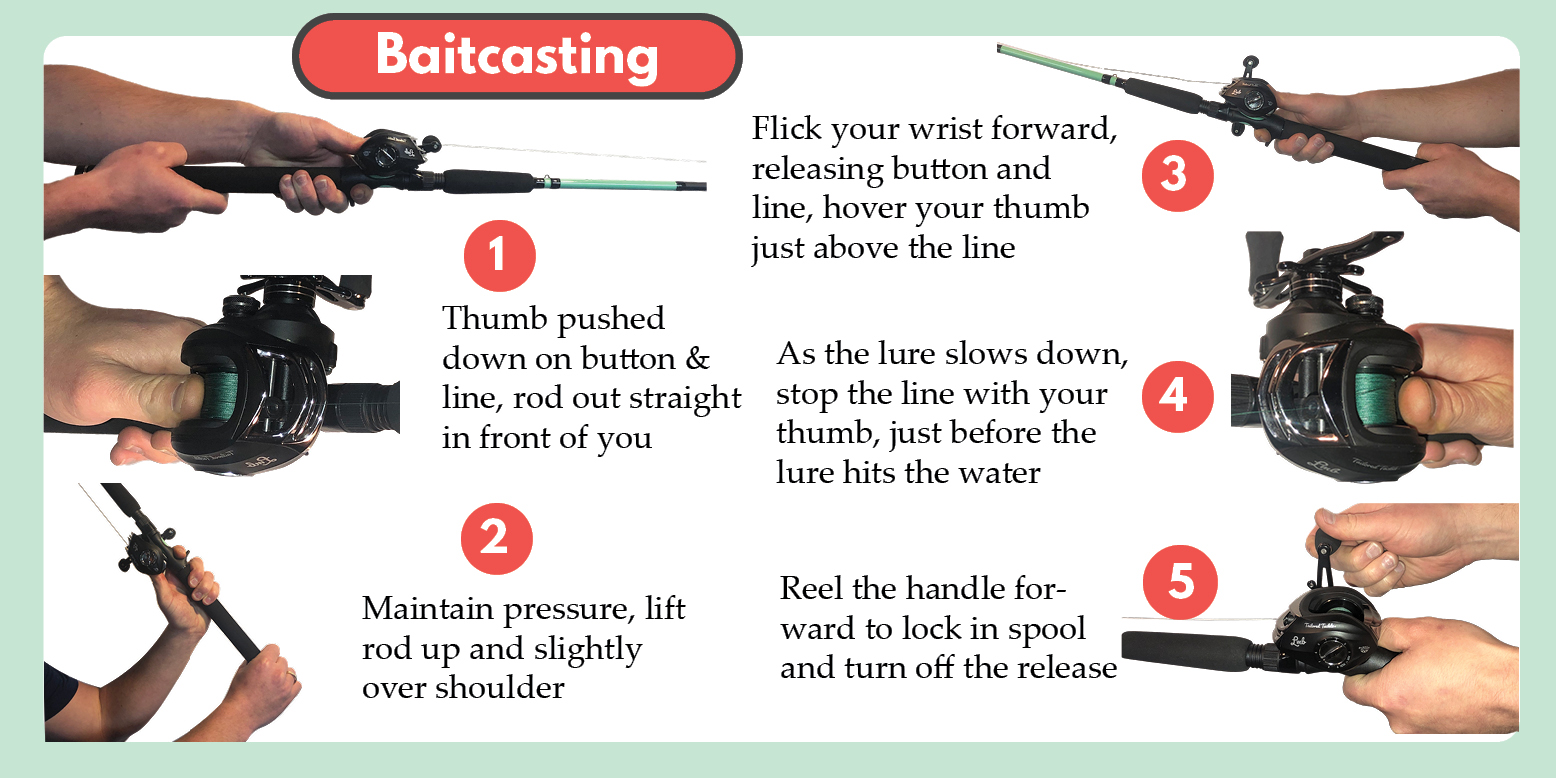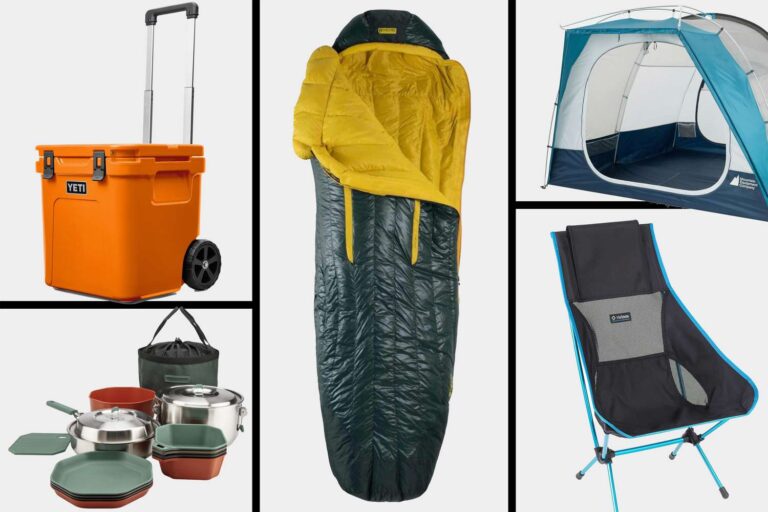How to Cast a Baitcaster: Master the Art of Precision Fishing
Casting a baitcaster can seem tricky at first. But it’s a skill worth learning.
In this guide, you will find clear steps to help you cast a baitcaster with ease. Fishing with a baitcaster offers precision and control. Many anglers prefer baitcasters for their accuracy and power. Yet, beginners often find them challenging to use.
This blog post will break down the process into simple steps. By the end, you will understand how to cast a baitcaster confidently. Whether you’re new to fishing or just new to baitcasters, these tips will help you improve your casting skills. Let’s get started!
Choosing The Right Baitcaster
Picking the right baitcaster can be a challenging task. There are many factors to consider. You need to find a baitcaster that fits your fishing style. Let’s explore some key aspects to help you make the best choice.
Types Of Baitcasters
Baitcasters come in different types. Each type has its own advantages. Here are the most common types:
- Round Baitcasters: These are great for large fish. They have a higher line capacity.
- Low-Profile Baitcasters: These are easier to handle. They are best for precision casting.
Key Features To Consider
When choosing a baitcaster, pay attention to these key features:
| Feature | Description |
|---|---|
| Gear Ratio | The speed at which the line is retrieved. Higher ratios mean faster retrieval. |
| Braking System | Helps control the spool’s speed. Reduces backlash and improves casting. |
| Bearings | More bearings provide smoother operation. Look for stainless steel or ceramic bearings. |
| Drag System | Controls the resistance a fish feels when pulling on the line. A smooth drag system is essential. |
Consider these features carefully. They will impact your fishing experience.

Credit: www.wikihow.com
Setting Up Your Baitcaster
Setting up your baitcaster correctly is crucial for a smooth fishing experience. It involves adjusting the brakes and spooling the line. Let’s break down each step to ensure your baitcaster is ready for action.
Adjusting The Brakes
The brake system controls the speed of the spool. Proper adjustment prevents backlash.
- Locate the brake control knob on the side of the reel.
- Turn the knob to adjust the brakes. Start with a higher setting.
- Test the cast and fine-tune the brake settings. Lower the brakes slowly.
Adjusting the brakes helps maintain control over your cast. This simple step can greatly enhance your fishing efficiency.
Spooling The Line
Correctly spooling the line is another essential aspect. This ensures smooth casting and reeling.
- Start by attaching the line to the spool. Use an arbor knot.
- Hold the line taut and begin spooling. Ensure even distribution.
- Fill the spool to about 1/8 inch from the edge. Avoid overfilling.
Spooling the line properly prevents tangles. It ensures that your baitcaster performs at its best. Follow these steps for optimal results.
Perfecting Your Casting Technique
Learning to cast a baitcaster can be tricky at first. But with practice, you can improve your skills. This section will help you perfect your casting technique. Focus on thumb control and casting angles.
Thumb Control
Thumb control is key in casting a baitcaster. Your thumb must press on the spool. This prevents backlash. Start by pressing lightly. Adjust your pressure based on the lure’s weight. Practice this to get a feel for it. Remember, a lighter touch works best with lighter lures. A heavier touch is needed for heavier lures.
Casting Angles
The angle of your cast affects distance and accuracy. Start with a 10 o’clock to 2 o’clock motion. This means your rod starts at 10 o’clock and ends at 2 o’clock. This angle helps you cast further. It also keeps your lure from splashing too much. Try different angles to see what works best for you.
Another tip is to keep your wrist steady. A steady wrist leads to a smoother cast. Avoid jerky movements. Smooth motions give better control.
Handling Backlash
Handling backlash can be a frustrating part of learning how to cast a baitcaster. Backlash occurs when the spool spins faster than the line can leave it. This results in a tangled mess, often called a bird’s nest. Understanding how to manage backlash is key to a smooth fishing experience.
Prevention Tips
Preventing backlash starts with proper setup. Adjust the spool tension knob to match the weight of your lure. This will slow down the spool’s spin. Next, use your thumb to control the spool speed. Press gently to stop the spool as the lure hits the water. Practice casting with a heavier lure at first. Heavier lures are easier to control. Finally, avoid casting into the wind. Wind can cause the line to tangle more easily.
Fixing A Bird’s Nest
If you get a bird’s nest, don’t panic. First, stop reeling in. Pull out the tangled line carefully. Look for loops and pull them gently. If needed, use a small tool to pick out tight knots. Cut the line as a last resort. Avoid pulling hard on the line. This can make the knots tighter. Stay patient and work slowly. With practice, fixing a bird’s nest will become easier.
Selecting The Right Lures
When learning to cast a baitcaster, selecting the right lures is crucial. The right lure can make a big difference in your fishing success. Different lures work better in different conditions. This section will guide you in choosing the best lures for your baitcaster setup.
Lure Types For Baitcasters
There are several lure types suitable for baitcasters. Crankbaits are popular and mimic small fish. Spinnerbaits have blades that spin and flash, attracting fish. Jigs are versatile and work well in various water depths. Soft plastics, like worms and grubs, are also effective.
Matching Lures To Conditions
It’s essential to match lures to fishing conditions. In clear water, use natural-colored lures. In murky water, bright colors work better. For deep water, heavier lures are needed. In shallow water, lighter lures are best. Consider the time of day too. Fish are more active at dawn and dusk, so use lures that mimic their prey’s movement at those times.
Advanced Casting Techniques
Advanced casting techniques can improve your fishing success. These methods provide greater accuracy and control. They help you place your bait where fish are hiding. Let’s explore these techniques in detail.
Pitching And Flipping
Pitching allows you to cast short distances with precision. Hold the rod at a 45-degree angle. Swing the bait in a pendulum motion. Release the spool when the bait reaches the desired spot. This technique is useful near structures.
Flipping is similar but does not involve reeling. Pull out some line with your free hand. Swing the bait forward while releasing the line. Maintain control of the line with your hand. This technique works well in heavy cover.
Skipping Lures
Skipping lures create a realistic presentation on the water surface. Use a sidearm cast for this technique. Aim low and flick your wrist. The lure should skip across the water like a stone. This method is effective under docks and overhangs.
Practice is key to mastering these techniques. Start with short distances and gradually increase. Consistency and patience will improve your casting skills.
Maintaining Your Baitcaster
Proper care of your baitcaster ensures its longevity and efficiency. Regular maintenance prevents wear and tear. Clean and lubricate your baitcaster often. Store it properly to avoid damage.
Cleaning Tips
Begin by removing the spool. Use a soft brush to clean the exterior. Wipe it with a damp cloth. Avoid harsh chemicals. For the interior, use a cotton swab. Remove dirt and old grease. Clean all parts thoroughly.
Lubrication And Storage
Lubricate the gears and bearings. Use oil designed for fishing reels. Apply a small amount. Avoid over-lubrication. It can attract dirt. After lubrication, store your baitcaster properly. Keep it in a cool, dry place. Avoid direct sunlight.

Credit: www.tiktok.com
Common Mistakes To Avoid
Learning how to cast a baitcaster can be tricky. Many beginners make common mistakes that can hinder their progress. Understanding these mistakes will help you become a better angler.
Overcasting
Overcasting is a frequent mistake many anglers make. This happens when you try to cast the lure too far. It can lead to backlash, which is a tangled mess of fishing line. To avoid this, focus on controlled and smooth casts. Start with shorter distances and gradually increase as you improve.
| Issue | Solution |
|---|---|
| Backlash | Shorten your casts |
| Reduced accuracy | Practice smooth casting |
Ignoring Wind Conditions
Ignoring wind conditions is another common mistake. Casting against the wind can cause your line to tangle. Always be aware of the wind direction. Casting with the wind helps your lure travel further and reduces the risk of backlash.
- Check wind direction before casting
- Adjust your casting technique accordingly

Credit: tailoredtackle.com
Frequently Asked Questions
What Is A Baitcaster?
A baitcaster is a type of fishing reel. It provides better control and accuracy. It’s preferred by experienced anglers.
How To Adjust A Baitcaster?
To adjust a baitcaster, set the spool tension knob. Adjust the brake system. This prevents backlash and improves casting.
What Line To Use On A Baitcaster?
Use a monofilament, fluorocarbon, or braided line. Choose based on fishing conditions and target species. Each type has advantages.
Why Does My Baitcaster Backlash?
Backlash occurs due to improper settings. Adjust spool tension and braking system. Practice casting to reduce backlash.
Conclusion
Learning to cast a baitcaster takes practice, patience, and persistence. Start slow. Adjust your settings. Practice in open areas. Gradually, you will feel more comfortable. Keep your thumb ready to control the spool. Remember, even experienced anglers face backlashes sometimes.
Don’t get discouraged. With time, your skills will improve. Enjoy the process. Happy fishing!


